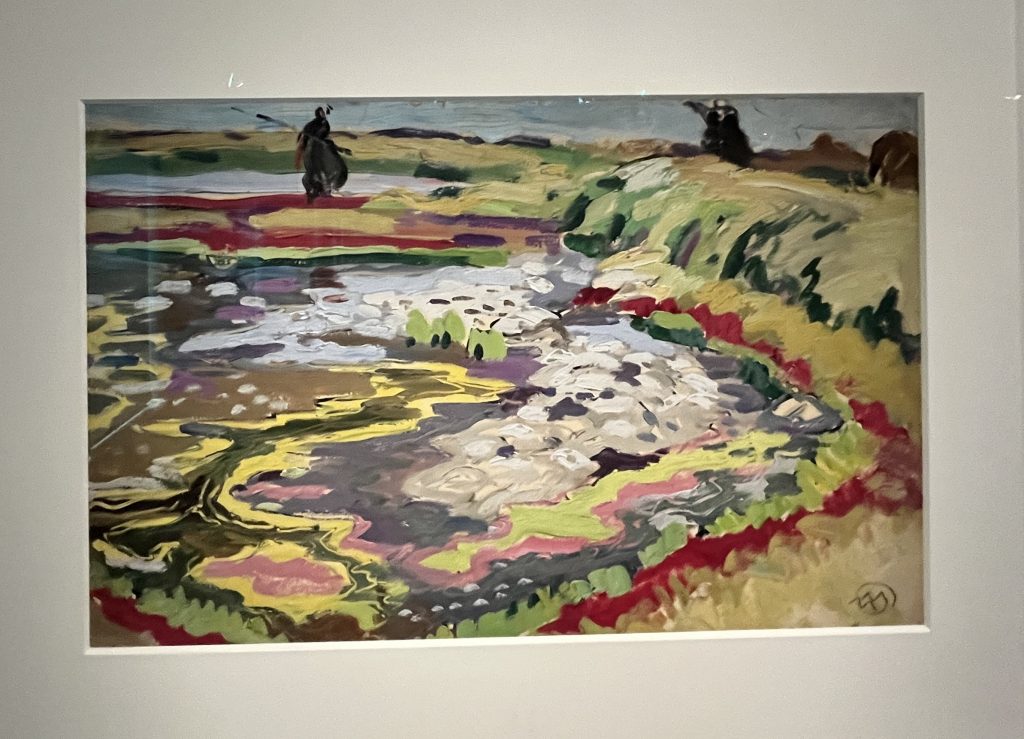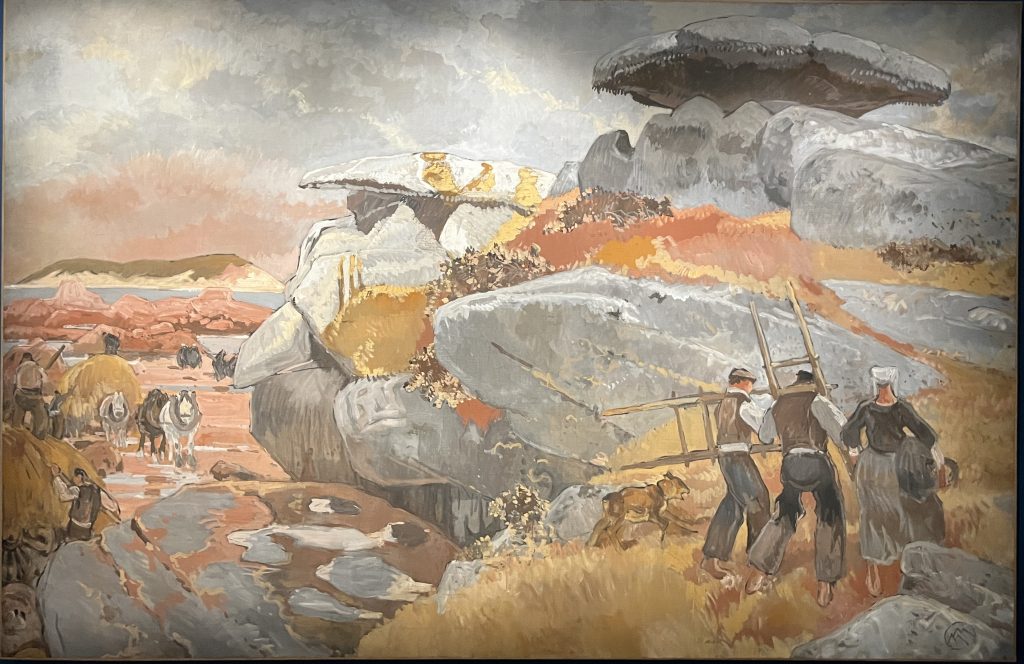In three days, I saw three exhibitions of Mathurin Méheut‘s works, in Pont Aven, Sainte Marine and Lamballe, and I did not get tired. He is a major Breton, artist who worked with the Gobelins for his tapestries, the Henriot ceramists in Quimper and Sèvres porcelain for his plates, painted fish, animals and nature for Le Minor, fought in two wars and documented the lost artisans of Brittany. He was asked to paint a large fresco for the Heinz headquarters in Pittsburg and decorated transatlantic ships with his assistant Yvonne Jean-Haffen. His major works remain paintings of the “Pardons”, religious ceremonies around Brittany and “Le Cirque”, a circus production on the cliffs.
Mathurin Méheut was incredibly prolific: born in 1882, he left Lamballe for Paris where he had a first exhibition at Musée des Arts Décoratifs in 1913. This led him to win a scholarship awarded by the Albert Kahn foundation and he travelled to the US, Japan and Hawaï with his wife. He had to return to France when WWI was declared. When a soldier on the front, he painted many scenes like the Arras town hall in ruins in 1915 or the Chinese camp of Bergues. This would inspire him later on, to do a portrait of Georges Clemenceau visiting the trenches.
He also published a book called “Regarde” with Colette, spent as much time painting lobsters, as fields of wheat or storms at sea. Religious feasts were a great theme with rallies of well dressed villagers. He showed a true love for the little people, workers, farmers, fishermen, carpenters, etc. While the museum, which is devoted to him in his native town of Lamballe, in Northern Brittany, is more focused on decorative arts and his war years, the little show in Sainte Marine’s fort narrates his collaboration with Le Minor, one for my favorite table cloth shop in Pont l’Abbé, and in Pont Aven, a retrospective is more focused on his maritime works.
Some of his paintings are very descriptive and realistic, other views are almost abstract like the salt fields near Guérande, a colorful oil on cardboard. He also depicted the many islands of Batz and Sieck near Roscoff in 1900, Ile de Sein and Ushant, Gavrinis and Saint Cado in Morbihan.
And went as far south as Guérande near la Baule. But his interests also brought him to describe the slate workers, studying how they made up to 20, 3mm slates, with a 6 cm block. Markets and sardines factories, descriptions of old towns such as Locronan, or rocks in Ploumanac’h: all these illustrations would make a perfect guidebook for the unknown landscapes of Brittany.
The museum in his hometown of Lamballe was inaugurated on June 18, this year, after a complete refurbishment. It was first founded after his death, in 1958 by René Pleven in a private house with the works given by his wife and daughter and then directed by Yvonne Jean-Haffen, his student and colleague, from 1972 to 1992. It is now part of the Haras National (the Stud farm), a large complex in the center of Lamballe, where you can watch the most beautiful horses perform. Besides the plates made for the famous fish restaurant Prunier in Paris and London, he created a very pretty service at Sèvres for the David-Weill family which is exhibited in Pont Aven.
His style, full of harsh contrasts, gives a good idea of how hard life was in Brittany at the beginning of the XX th century, whether at sea or in the fields. Both Pont Aven and Lamballe are very pretty museums with contemporary architecture adapted to the old buildings. And it was a huge discovery for me to see so many of Mathurin Méheut’s works at the same time. He died in 1958 with a very diversified corpus of drawings, paintings, sculptures, decorative arts objects and prints. You can breath the air of Brittany thought his works.
Lamballe Musée Mathurin Méheut, besides the permanent collections there is a special exhibition on transatlantic ships until 8 January 2023. At Pont Aven until December 31. The drive from Pont Aven to Lamballe is two hours from South to North Brittany. And there are many things to visit on the way…
Share this Post
Share this Post









2 Comments on “Mathurin Méheut is rediscovered in Brittany”
Thank you for sharing Laure. I always loved his work but only seen it in books..
I wish Pont Aven was not 5 hours away
Merci chère Laure de nous faire découvrir cet extraordinaire artiste
J’ai eu moi aussi un coup de cœur et je n’ai vu que l’expo de Pont Aven !